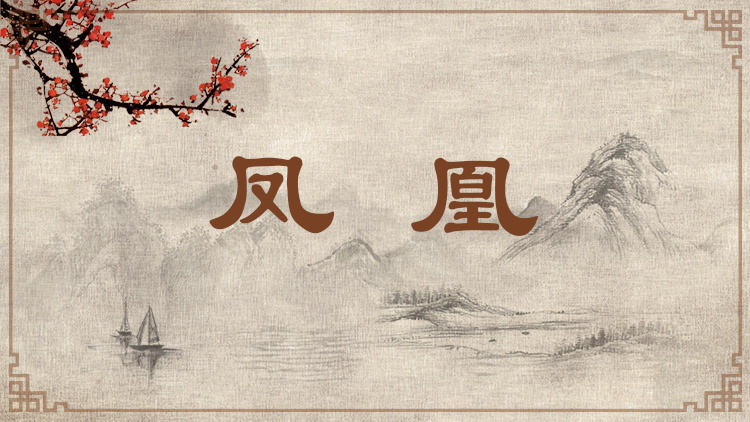
传说中的神鸟,百鸟之王。雄的称“凤”,雌的称“凰”。秦汉以降,帝王比作“龙”,皇后及嫔妃比作“凤”,“凤凰”遂开始整体雌化,常单名“凤”。关于其种类和形象的描述历经复杂的演变过程,成为多种鸟兽特征组合成的神物。如郭璞《尔雅注》描述为:“鸡头、燕颔、蛇颈、龟背、鱼尾,五彩色,高六尺许。”“凤凰”最早应当是原始部落图腾,后被当作太平盛世的征兆,还用于对美满姻缘的祝福,含有高贵、和谐、吉祥、幸福等意。它与“龙”一样,是中华民族的一个重要文化符号。
Fenghuang (phoenix) is a legendary divine bird and the king of all birds. Feng is male, and huang is female. Beginning in the Qin and Han dynasties, emperors were referred to as long (dragons) while queens and royal concubines were called feng (phoenix), so fenghuang came to mean women only. The description of the phoenix as a species and its image changed over the centuries, eventually making it a divine bird with both bird and animal features. For example, in Guo Pu's Commentaries on Er Ya, the phoenix is described as "a colorful six-chi-tall bird with a chicken's head, a swallow's jaw, a snake's neck, a turtle's back, and a fish's tail." In the very early days, the phoenix was probably just a primitive tribal totem. Later, however, it became a symbol of peace and prosperity. It was also used to bless marriages, as it represents nobleness, harmony, auspiciousness, and happiness. Like the dragon, the phoenix is an important cultural symbol of the Chinese nation.
引例 Citations:
◎诗曰:“凤凰秋秋,其翼若干,其声若箫,有凤有凰,乐帝之心。”此不蔽之福也。(《荀子·解蔽》)
诗云:“凤凰翩翩起舞,羽翼似盾一样雄壮,鸣声似箫一样动听,又有凤来又有凰,帝王心中喜洋洋。”这是认识没受到遮蔽而带来的幸福啊!
It is said in an ancient poem: "When the phoenixes dance, their wings are as strong as shields, and they sing as beautifully as melody from a vertical bamboo flute. So the king is overjoyed by the presence of both male and female phoenixes." This is indeed a great fortune because it suggests the king remains clear-minded and has a penetrating vision. (Xunzi)
◎治化周浃,凤凰来仪也。(《资治通鉴·唐纪八·太宗贞观二年》)
国家治理井然有序,民众教化得到普及,凤凰来舞,仪表非凡。
When the country is well-governed and all the people are enlightened, the phoenixes will come to dance. (History as a Mirror)
推荐:教育部 国家语委
供稿:北京外国语大学 外语教学与研究出版社
责任编辑:钱耐安





